Retractable structures provide the solution for high-quality outdoor space with stylish and elegant spatial aura for the users. Clients and Users who tend to transform space mechanics without permanent construction, use a retractable structure solution according to the function and viability of the situation. They offer structures with highly transforming-value added outdoor spaces and inviting gathering spaces without being counted under the criteria of Floor Space Index.
Architects and Engineers design cutting edge components that are crafted with processional functioning. These structures provide shade and shelter in optimized space as they could be retracted back to the minimum contracted mechanism from a fully functional shaded frame.
Retractable structures are framed mechanisms with stretched fabric shade that can be spanned in public and private properties regardless of the Project Scale or complexity. It helps in converting the most out of the outdoor spaces; they increase footfall through shaded pause-spots and can also be energy efficient options through lowering down the microclimate by effective temperature lowering.
Types of Retraction Mechanisms
While considering options of retractable canopies and awnings; major options are available according to space occupancy and typology.
1. track Sliding
These structures glide on metal traction units or sturdy sliders to glide open and close according to weather viability. The canvas or the fabric that shades the area is folded neatly into pleats when retracted.
They protect from weather effects like sun and rain over a large spanned area too.
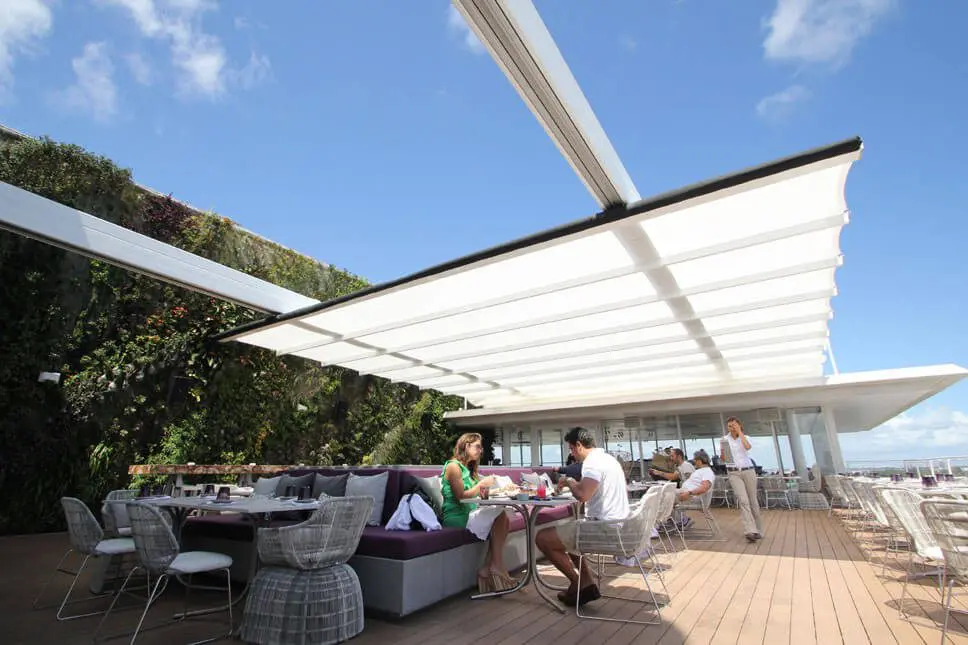
2. Wire Slide Canvas
Slide on wire canopies provide shade to outdoor spaces and also add up to the aesthetical appearance of the space. These are delicately designed on a system of durable wires and clip system. The canvas slides over the wires while being attached to the metal clips.
This system gives an option retraction and extension on either side or direction. The system provides the ability to shade the space and also provide an unobstructed view of the sky when desired.
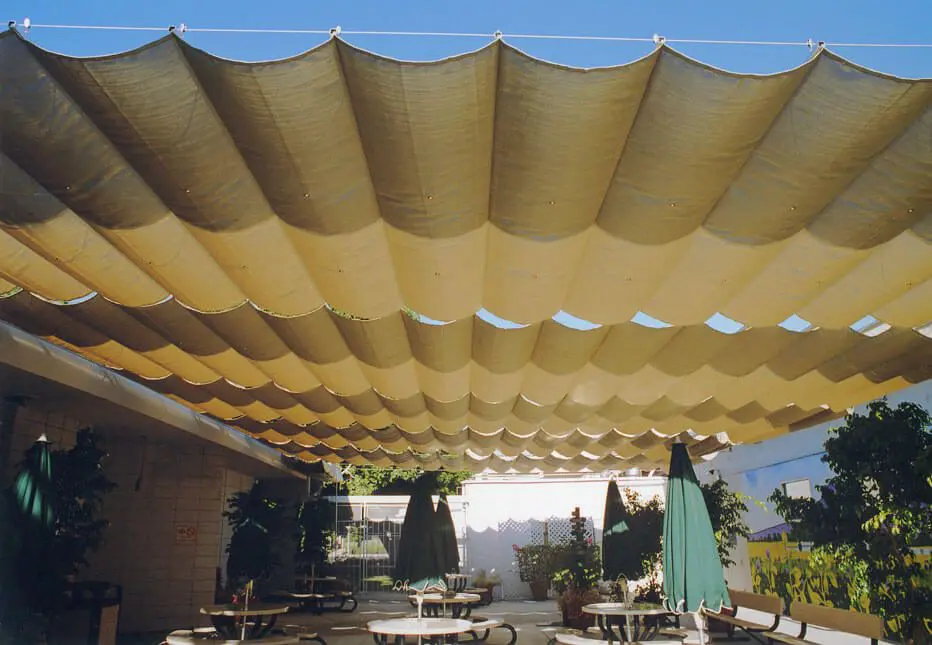
3. Lateral Arm
Awning designs that require effortless operation without complex mechanisms use Lateral arms as retractable structures. These are mounted on exterior walls of the building facade and thus creating a watertight protection.
Lateral Arms canopies blend the form and function for outdoor spaces by lateral extension frames with an optional single fold mechanism as an elbow joint. These extensions may have joints that can be folded back as an elbow to fold or roll back the canvas shade.
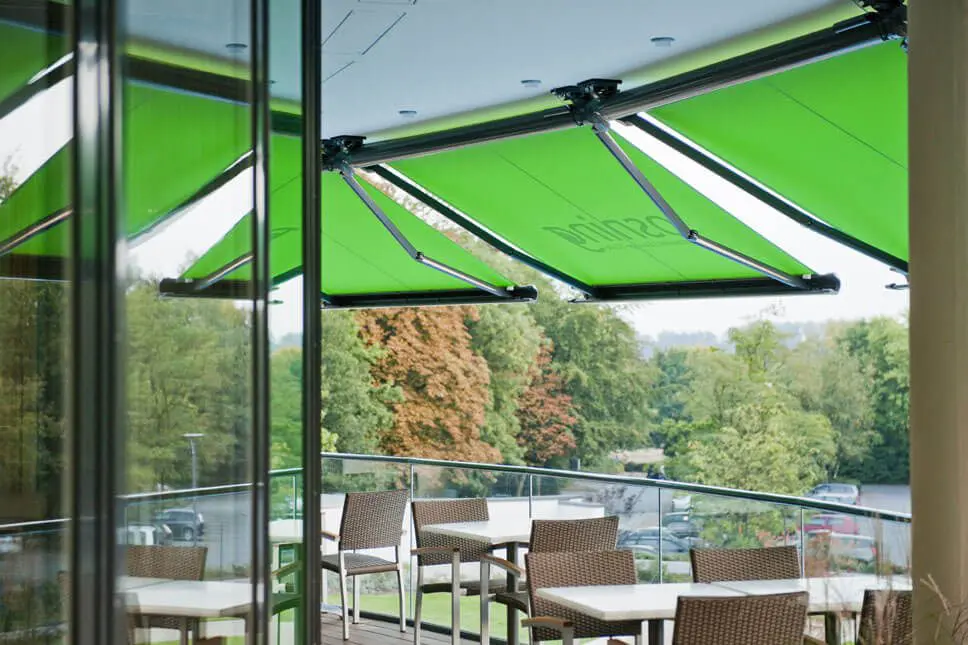
4. Shaded tensile Retraction
Tensile shades are modernistic designs that feature tensile membranes or Fabric canvas panels to create overhanging or overhead shade. These structures are stretched over a frame or pulley mechanism for extension or retraction of shade canvas. Common applications of these structures can be observed in open-air structures, porches, and patios.
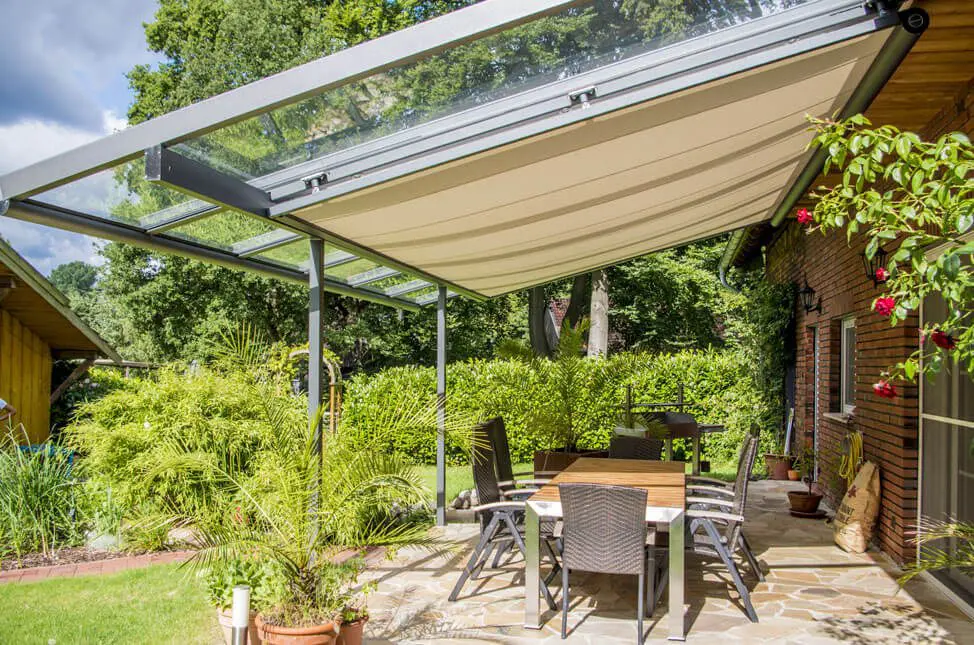
5. Vertical Screening
Exterior Facades that are directly exposed to sunlight require superior shading solution. The exterior vertical blinds are premium options to reduce glare and solar heat gain coefficient through screened obstruction.
Property owners requiring energy-efficient efforts while maintaining the style appeal of the home can opt for vertical screens matching with the Décor theme.
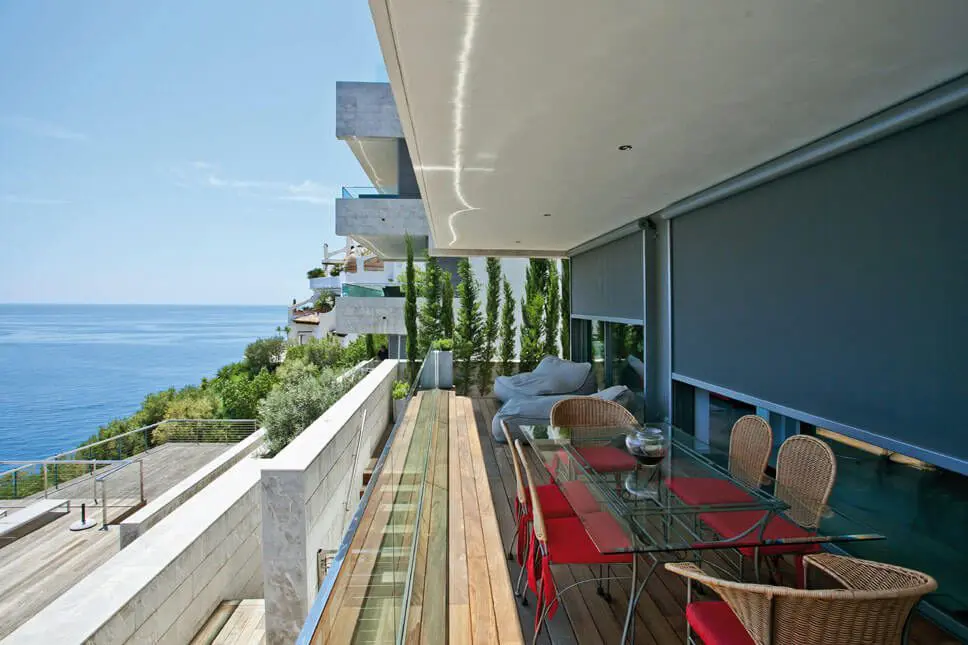
Location of Installation
1. Atrium
Atriums in commercial complexes are prone to major footfall and require sunlight for ideal working in daylight to maximize resource management. Semi shaded spaces created through retracted shades in atriums are such an example of temporary yet effective solutions.
2. Swimming Pool
Architects and designers create virtual volumes and spaces that replicate nature-inspired home arrangements. Thus, swimming pool designs are generally open to the sky. Retractable structures can offer temporary shade to swimming pools whenever there is a need for shade according to weather.
3. Open Air Theatre
Social gathering spaces like open-air theatres are inter-connected built and unbuilt spaces. These require semi-shaded and semi-enclosed volumes, retractable structures can cover these Open-Air Theatres for creating virtually enclosed volumes.
4. Patio
Houses with outdoor areas that are potential of creating gathering and social vibe but lack the option of constructing permanent roofing over these spaces because of restrained floor space index. Retractable structures can be installed in these spaces as an alternative to save F.S.I. Paved outdoor spaces like Patios are a good location to consider for retractable structures as it would be a benefit to save the floor space Index.
5. Courtyard
Climatic conditions like composite climate are fickle in terms of weathering effect. Thus, permanent construction over these spaces would not be advisable.
Courtyards circulate air and eliminate humidity, but sometimes shades are required while exposed to sunlight.
Retractable Structures are a solution for courtyards with such a scheme of changing weather in composite climate.
6. terraces / Balconies / Open Passages
Open Terraces are a good option for users, Semi-shaded structures or retractable structures over open terraces can convert the whole space index into spaces that can be used in harsh weather conditions too.
Retractable Structures can be installed over open terraces to save floor space Index by avoiding permanent covered construction.
7. Portico
Buildings with Entryways that are space-constrained, cannot afford permanent shade to counter Floor Area Ratio or Floor Space Index. These Porticos can be treated with retractable temporary shade mechanisms for functioning under constraint space.
– Anshul Kulshrestha





